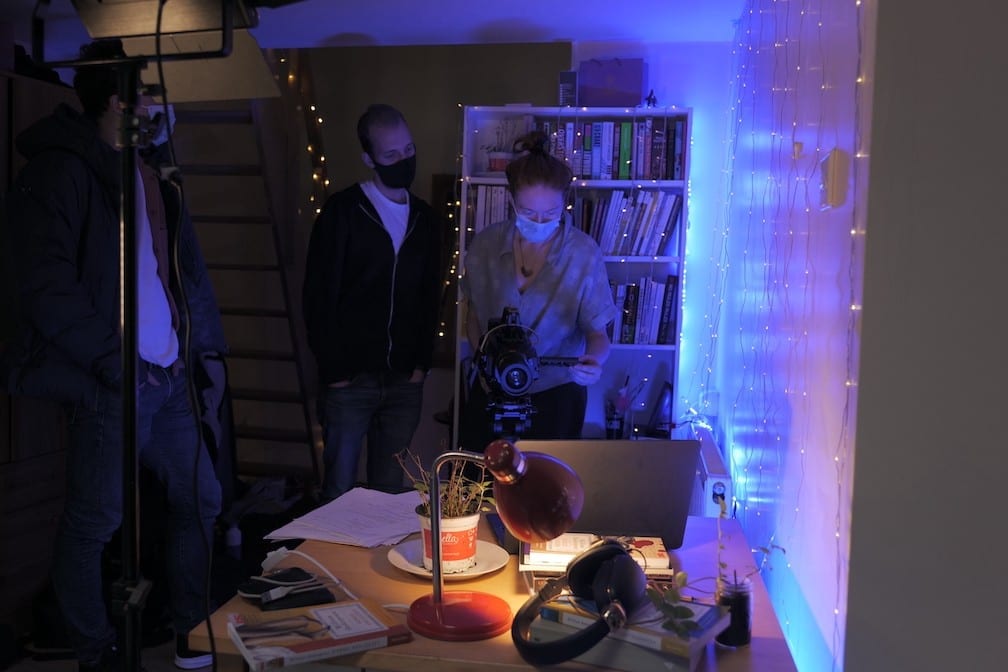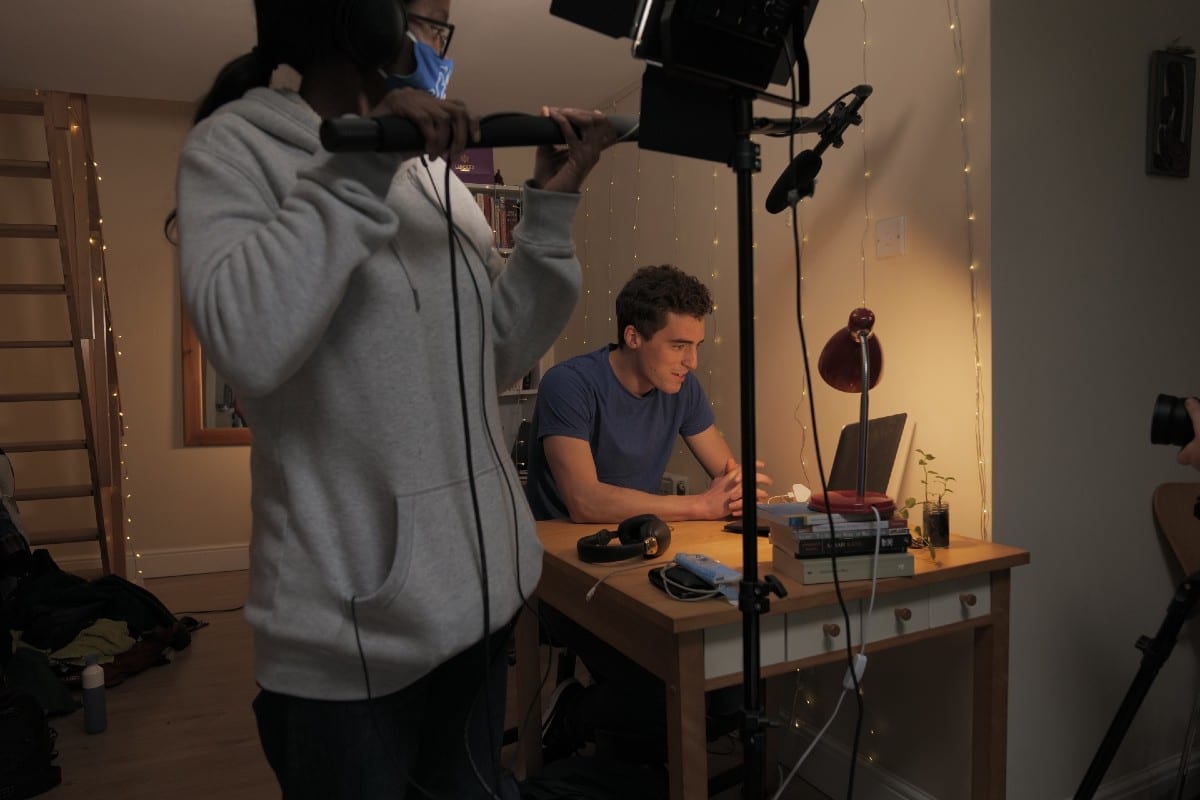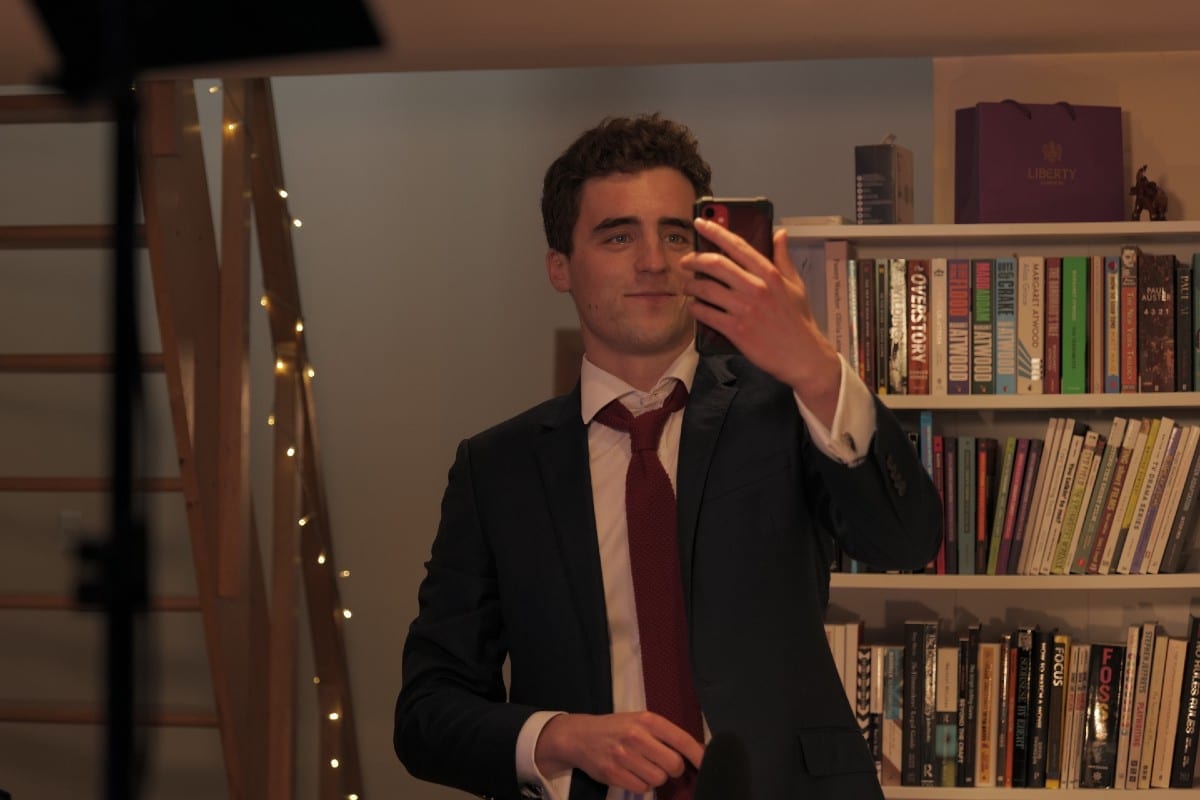The 2020 pandemic put a stop to many things last year, including grinding the whole filmmaking industry to a halt.
While I knew it would be difficult to shoot something during the pandemic, I decided to try to make a short film when things began to open up again at the tail-end of last year.
I ended up writing and directing a short film called Life’s a Show, a 10-minute comedy looking at people’s need for attention and recognition.
Making A Comedy Short Film – An Introduction
During the height of Covid-19, I noticed more and more people taking to social media, going live, and showing elements of their everyday lives. This gave me the inspiration for the film.
The film follows an actor, Matt, whose play is canceled, who realizes, after a particularly difficult conversation with his mother. Without acting, his life lacks direction.
Taking this thought all too literal, he decides to hire a director to help guide him through his everyday life over video call.
Things quickly escalate as he realizes what he truly needs is an audience, or else his performance is pointless.
If you’re interested in making a short film over Zoom (or any other videocall software!) or how to film during Covid-19, check out the tips below.
Note: All stills in this article are pre-color grade. We’re currently crowdfunding to hire some post-production help and cover festival submission fees!
Planning
Actor Jon Tarcy, Writer/Director Harvey Puttock, and Cinematographer Lexy Anderson on set (Photo: Bailey Graham)
The make or break point of any film is using the planning – and this is even more important when considering how to create a Covid safe set experience.
Large-scale productions have an entire department dedicated to regularly testing the cast & crew to make sure everyone is clear to come to set.
This isn’t something quickly done on a budget (though this may change soon with the ability to get home tests in the UK).
One of the best ways to go about this is limiting the number of people on set.
During the planning stage, you can decide which departments are critical to the film’s success and which can be done without.
For example, with Life’s a Show, we would have had a hair & makeup/costume department to help with all the changes (it’s set over a few days), but ultimately decided this could be handled without them.
Another part of pre-production that becomes difficult with lockdown is auditioning and rehearsals.
Usually, you could have a casting call and get people to audition, where you can see if they’re suitable for the role and how they would work with you, the director.
Rather than try to take this process online, I decided to work with people I knew or had worked with before.
Both Lucy-Hilton-Jones and Dusan Mrden were in previous shorts I had written and directed (The Many Faces of Beth Jones and Yes, Virginia respectively), so I knew that they were the kind of actors who could pull off the roles I had.
By continually working with the same team, you can build trust and an understanding of how they work (and vice versa for them with you)!
This is especially useful when trying out new mediums of filming.
We also took rehearsals online, utilizing video calls.
Whilst this does limit what you can rehearse in terms of blocking and movement, this wasn’t too much of an issue for Life’s a Show as it is primarily set over video calls.
Filming
Sound Operator Tami Ige and actor Jon Tarcy on set (Photo: Bailey Graham)
There’s a wealth of technology out there now that will help you make films remotely, whether it be video calls, screen sharing/recording or even just recording phone calls.
Life’s a Show is a hybrid film, with the protagonist’s parts, shot on set, like a ‘normal’ film, and all the other characters joining the film via video call.

When it came to filming the on-set stuff, we had very few people on set, adhering to the government’s rule of six.
We had just five crew members, including myself and Jon Tarcy, who plays Matt.
This did mean that we all had to double up on jobs. For example, our Camera Assistant was also helping as the Assistant Director.
While this could have made things more complex, I had pre-planned the shot list with the Cinematographer beforehand meant we knew what order the shots would be done on the day.
Life’s a Show has three main characters in it (Matt, the Director, and the Second Director) and also an ensemble of audience members watching Matt’s actions within the film.
Each of the audience members and both director roles were shot remotely via video call.
As I knew the director roles might have close-ups (where they are the only person on-screen), I got them to record with DSLRs as I guided them over a video call.
In the end, this led to us having eight people recorded remotely over Zoom and ten further people watching a rough cut of the film and reacting to that while recording with their computer webcams.
Across the cast, we had people tuning in to do their part from five different countries.
Marketing
Jon Tarcy as Matt (Photo: Bailey Graham)
It’s one thing just making a film for fun (and yes it’s hard work & sometimes stressful, but don’t let people tell you anything else, it’s still fun!) you will also need an audience to watch it.
Creating a buzz around your film before its release will slowly build interest and an audience for your film.
There are many ways you can do this, such as social media.
You can create a Twitter or Instagram account (as I did for my production company Coin Operated Films) and post about your filmmaking process, as well as stills and trailers when they’re ready.
Starting your marketing campaign early will help your film get into Film Festivals and have a packed audience when it comes to playing.
If you have articles or social media accounts, you can link these on Film Freeway so festival programmers can find out more about your film.
Another great marketing tool is creating a Press Kit, where you can have all of the information about your film in one place. These are also useful for Film Festivals as you can attach the press kit with your submissions.
Making A Comedy Short Film – Wrap Up
Hopefully, these tips will help you to continue to be creative during these testing times. While it may seem impossible to make a film at the moment, there’s so much technology out there that can help you do it.
Here’s the trailer for the short, Life’s a Show:
Life’s a Show Trailer from Harvey Puttock on Vimeo.
You can find out more about my film Life’s a Show on our social media or our crowdfunding campaign that we are currently running to raise festival submission fees and complete the edit.





